Guide Navigator

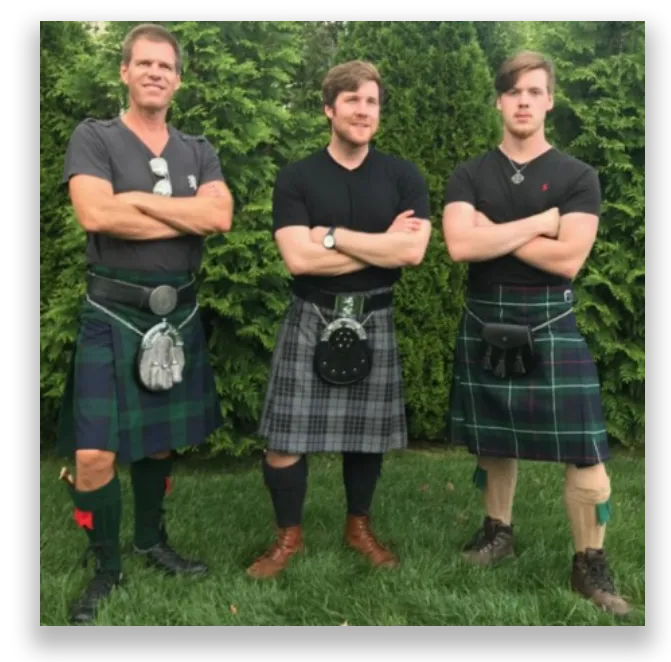
What is a Kilt?
A kilt is a knee-length skirt made up of tartan print. It’s typically pleated and styled with a mini bag on the front. They’re usually worn by men, but they’re considered gender-neutral garments as of today.
In terms of materials, kilts are made out of woven wool with colors ranging from traditional red to forest green.


1.1 Wrap the kilt around your body with the pleats to the back
Take your right arm and wrap it around your front. The edge of the right should meet up with the left, where there is a small hole in the lining for a strap to go through.

1.2 Fasten the kilt by buckling the aprons
Fasten it to the buckle, just like a belt, at the outer edge of the left waist.
With your left hand on your right hip, fasten the leather strap on the left apron, or front apron, to the buckles on the right; usually, there will be two. Do the top strap first.
If your kilt features a third strap further down the right hip, fasten it to create a smooth fit across the stomach. Make sure it's not bunching toward the top or along the buckles.
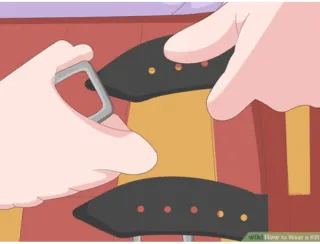
1.3 Adjust the kilt
If you have buckled the kilt correctly, the fringed edge of the kilt should be along the right side and the kilt should be centered on the body. Most kilts feature a pivot point in the tartan in the center of the front apron. This is the place where the tartan pattern mirrors itself. This pivot point should be in the center of your body.
It should have a good A shape to it. Adjust as necessary, making sure that you're comfortable and everything is laying correctly.
The hem of the kilt should fall at the middle of your knee. Get down on your knees and the edge of the kilt should be about 1 inch to a half inch off the ground.
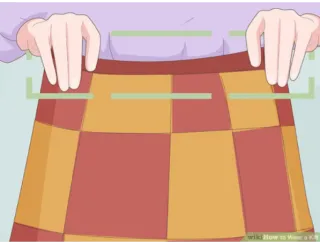

2.1 Put on the kilt hose, garters (an elastic band) and flashes (colored ribbons).
Generally, keep the flashes with the kilt they match. Pull the kilt hose, which resemble knee socks, over the knee before you deal with the other two pieces.[3]
Fasten the garter and flashes just below the knee. The flashes should be off to the outside of the leg.
Fold the kilt hose to below the knee about 3-4 fingers down and over the garter, displaying a few inches of the flashes. Smooth it all out and adjust as necessary, making sure both sets of flashes are displayed at the same angle. eg: Left Hand at 11 am, Right Hand at 1 pm.

2.2 Put on your brogues
Don't tie them halfway up your legs! There are two ways to tie them; choose the one that appeals most to you.
The High-Front Tie: Start by making sure your laces are the same length. Tie half a knot, keep some tension on the laces, wrap them around the back of your ankle, twist once or twice and then again around the front, (sometimes around the back twice, depends on laces length making an X. The when back at the front again, tie it off to the side of the shin bone with a Half Hitch Bow is best.
The Low Tie: Follow the steps described in the High-Front tie method, but scrunch everything down so that it remains around your ankle instead of up your calf. With this method, tie in a bow or a half hitch bow.

2.3 Attach the sporran
A sporran is a leather or fur pouch that is traditionally worn at the front of a kilt. Fasten the sporran strap using the loops at the back of your kilt. The sporran should be centered and hang about 1 hands width below the bottom of the Waist Belt.
Otherwise, place the sporran at the back of your body and fasten the buckle in front of you. Swing it around so the sporran is now resting on your abdomen.
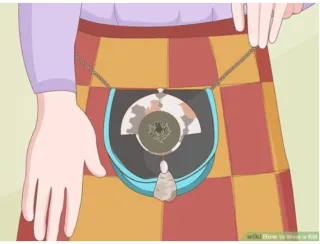
2.4 Attach your favorite kilt pin
They're available in a huge variety of styles and range from the classic to the contemporary. Pin your kilt pin through the front apron only. Pin it 4" (10 cm) up from the bottom hem and 2" (5 cm) in from the side.
In addition to being decorative, the kilt pin's weight helps keep the kilt from flapping, preserving your modesty when a breeze whooshes by.
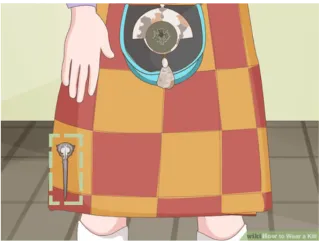
2.5 Put on your jacket and vest
This part is fairly self-explanatory. The only thing to remember is that in the back of the vest there's a little strap that can be adjusted to your size. Use it; you'll look better if the vest fits you right.
For less formal occasions, the waistcoat is unnecessary. Use your judgment.
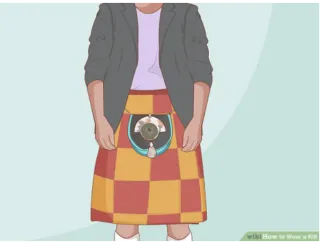
2.6 Don't forget your sgian dubh!
That's your knife (a traditional part of Highlands attire) -- arguably the most exciting part. This little dagger goes in your right sock if you're right-handed, left sock if left-handed. If you have a kilt pin, it's a good idea to have it match.
Push it down into your sock, just enough to have about 1 inch of the handle showing.
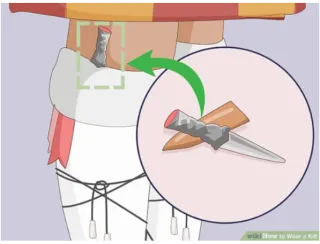

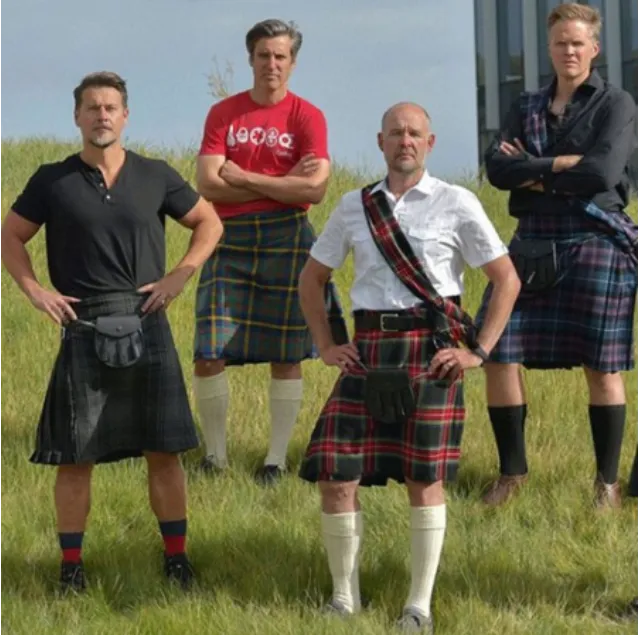
History of the Kilt
Derived from traditional Scottish wear, the kilt dates back to the early sixteenth century. Its literal translation means ‘little wrap’ in Gaelic, which made sense given its simple, pleated skirt structure.
The romanticism of tartan dress didn’t come into fruition until the mid-17th century when Prince Charles Edward Stuart led a rebellion to reclaim the British Throne.
Long story short, the kilt was no longer an ordinary garb of clothing. Instead, it came to symbolize revolution and Highland nationalism.
During that time, the kilt was reinvented to suit the likes of the Scottish military. In 1822, King George IV donned a pair of pleated tartans—which further cemented its significance to the nobility and the upper class.
Over the years, the kilt continued to serve as a critical part of Highland history, which even reached the likes of the late Queen Victoria.
Today, the kilt is typically worn as formal wear to weddings, funerals, or nationalistic events. Of course, they’ve undergone a significant style revolution thanks to young adults and teenagers, as kilts are now worn as streetwear.
But most agree that the traditional tartan kilt will always be synonymous with Scottish heritage.

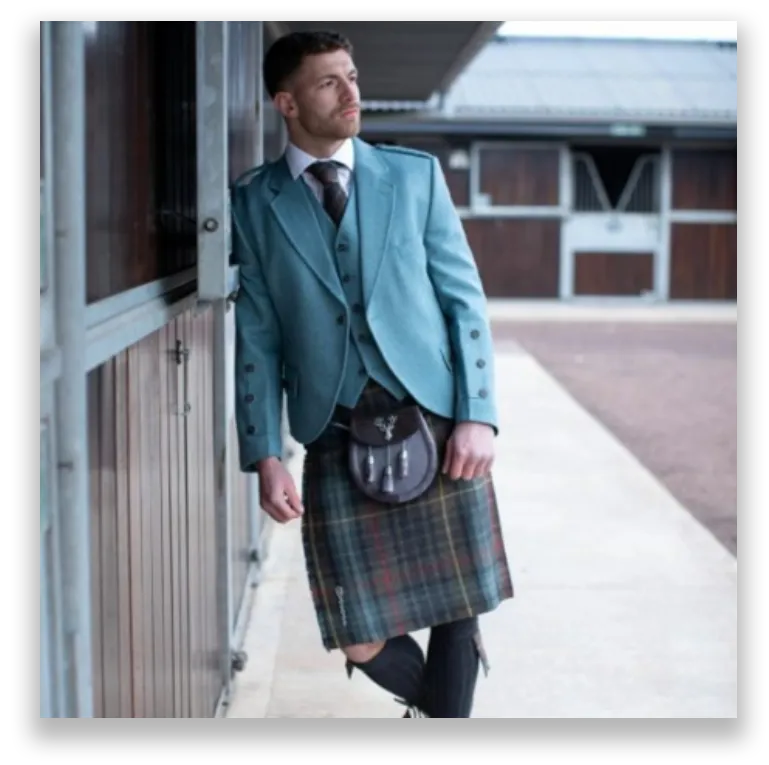
When to Wear a Kilt
As we mentioned before, kilts are commonly worn during formal events such as weddings, funerals, memorial days, and other important ceremonies.
They’re also fashioned during the Highland Games, which is an event held to celebrate Scottish heritage. Of course, kilts are also synonymous with the military—but they’re sparingly worn during battle.
Today, most trendsetters re-style the traditional kilt to symbolize rebellion and counterculture. It’s no longer a sign of strict uniformity—as fashionistas are free to wear them on an everyday basis.

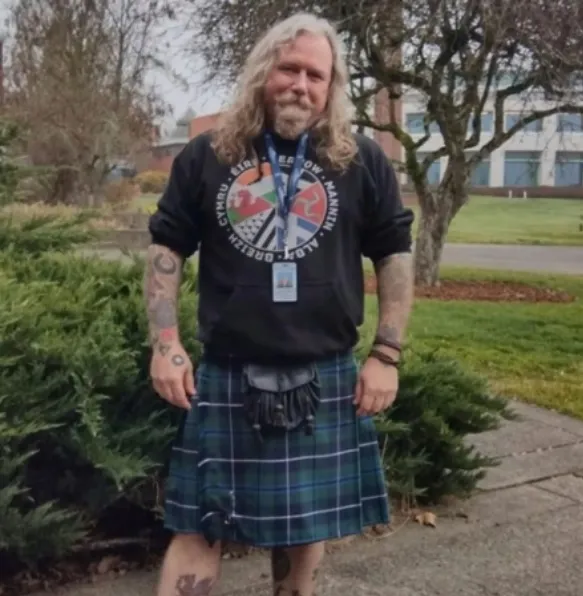
Fashion Tips to Avoid With a Kilt
So, you know how to wear a kilt. But what are some things you should definitely avoid? Considering the kilt is one of the more versatile garments out there, the amount of ‘fashion rules’ are quite small in number.
With that being said, there are some general no-no’s to consider. Below, you’ll find a numbered list of things to avoid wearing with a kilt.
Tip #1: The bare-breasted Scotsman
The bare-breasted Scotsman: for some reason, designers love pairing the traditional kilt with no shirt. As a result, the outfit becomes more comical than fashionable. Plus, it may not bode well with trendsetters who aren’t hitting the gym as frequently.
Tip #2: Lack of accessorizing and layering
Lack of accessorizing and layering: if you’re wondering how to properly wear a kilt, the answer lies in silhouette re-configuring. The bulky, yet structured shape of the skirt usually requires a baggy top to help balance out proportions. You don’t want to end up like Alan Cummings wearing a mismatched outfit paired with an ill-fitting blue tie.
Tip #3: Wearing baggy pants underneath
Wearing baggy pants underneath: skinny jeans, stockings, socks, and leggings are perfectly fine under a kilt. Wide leg jeans paired with a knee-length tartan skirt is not only an odd outfit, but it takes the attention away from the kilt.
Tip #4: Unconventional colors
Unconventional colors: neon kilts are a thing, and we hate it. The mishmash of traditional Scottish attire mixed with rave core spells Y2K regret. Let’s save neon for clubbing, guys.
Tip #5: Wear it with respect!
We’re sure that there are other no-no’s associated with the kilt. Hopefully, you’re a little bit closer to answering the question ‘what to wear with a kilt.’
Frequently Asked Questions
Explore Answers to Common Queries about Clan Mackintosh of North America
What is the history of Clan Mackintosh of North America?
Clan Mackintosh of North America represents the descendants of the Scottish Clan Mackintosh who settled in North America. The clan has a rich history dating back to its roots in Scotland. Contact us to learn more!
How can I join Clan Mackintosh of North America?
To join Clan Mackintosh of North America, simply register on our website.
What is the significance of the tartans associated with Clan Mackintosh?
Tartans hold a special significance for Clan Mackintosh, representing the unique heritage and identity of the clan members. Each tartan design carries historical and cultural meaning.
CMNA is a tax-exempt, non-profit organization granted under IRS Code Section 501 (c) (3) (EIN 31-1032695)
© Copyright of Clan Mackintosh 2026
Powered by Aderaco
